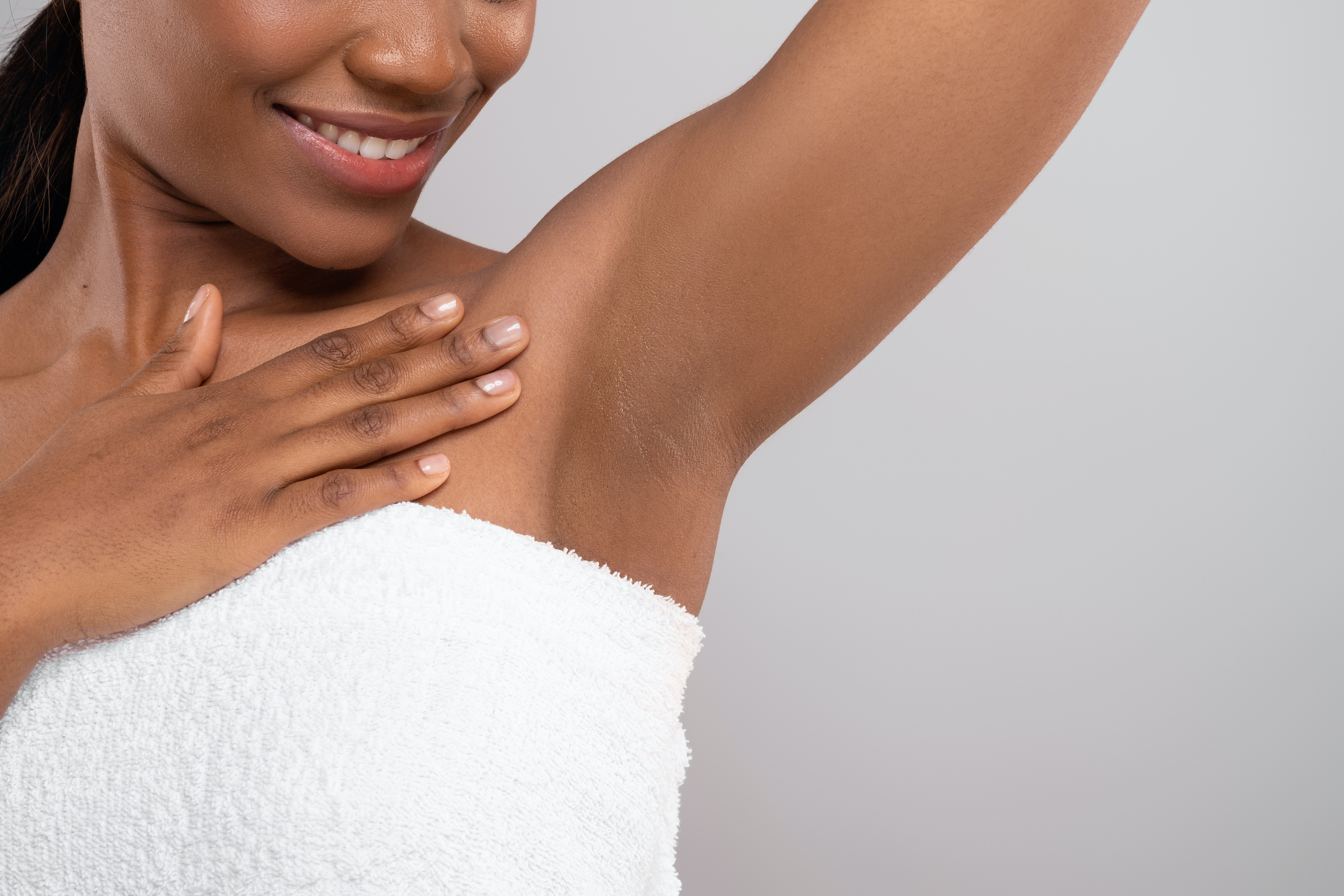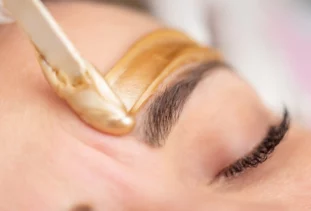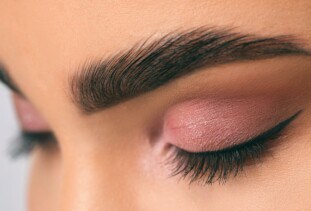Sugaring and waxing are popular hair removal treatments that can be done over the entire body. These two techniques are especially popular for bikini and Brazilian wax treatments. If you’re considering one of these services, it’s important to know what results to expect and whether you might experience any discomfort or side effects. This post will compare the two hair removal processes so you can choose the right one for you.
Table of Contents
What’s the Difference Between Sugaring and Waxing?
Typically gentler than traditional waxing, sugaring causes less irritation because it only removes the hair and dead skin cells, not some live skin cells like waxing. Sugaring uses natural, hypoallergenic ingredients (sugar, lemon, and water), so it’s better for sensitive skin and easier to clean up afterward. However, sugaring hair removal treatments are usually more expensive. Waxing uses a mixture of beeswax and other ingredients, which may not be 100% natural, depending on where you get your treatment.
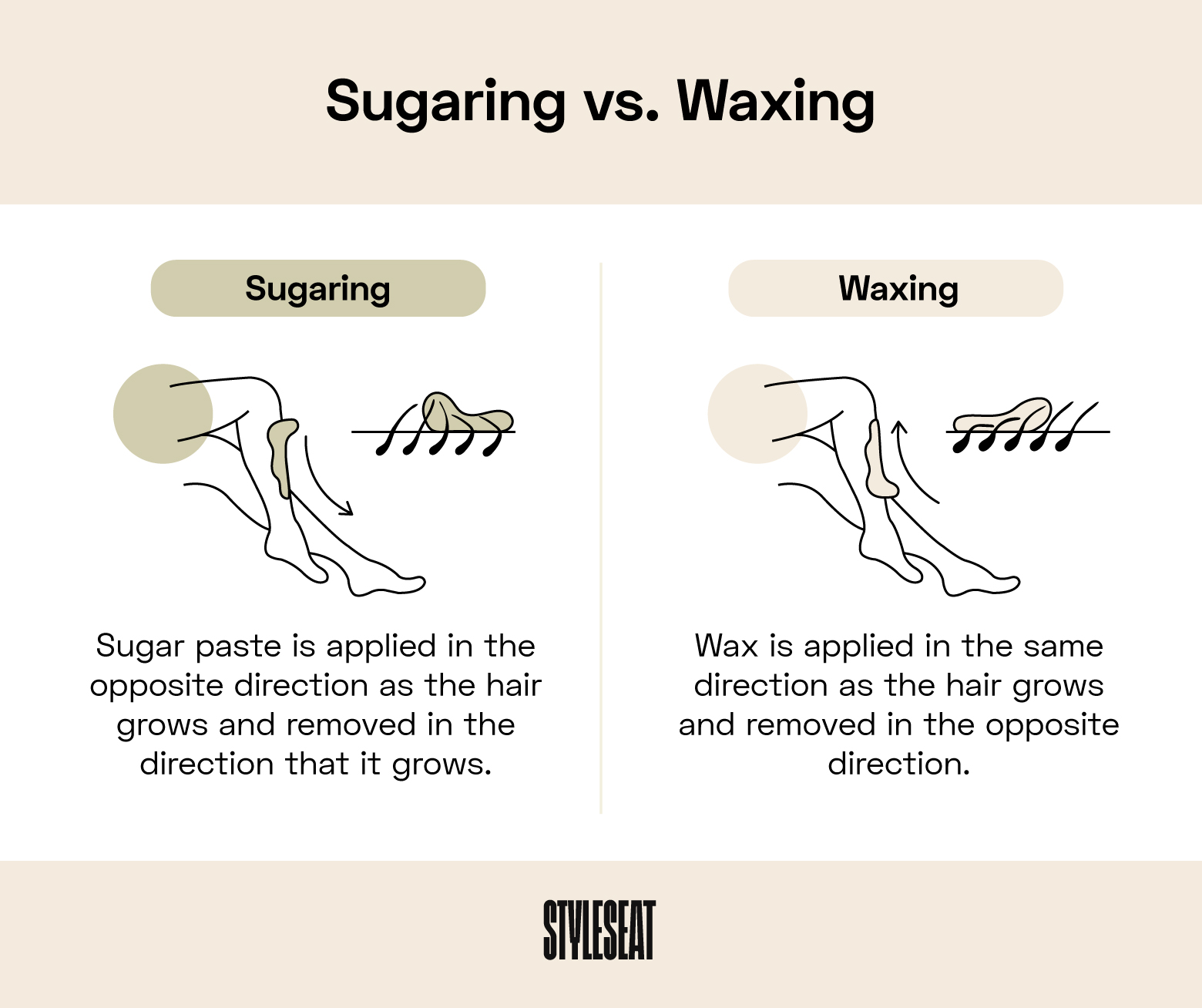
The main difference between the sugaring and waxing process is the direction the hair is pulled. With sugaring, the mixture is applied in the opposite direction that the hair grows and removed in the direction that it grows. With waxing, the wax is applied in the same direction as the hair grows and removed in the opposite direction. Sugaring takes multiple applications to remove the hair, but waxing only takes one, so waxing appointments are generally quicker.
| Sugaring | Waxing | |
| Ingredients | Sugar, lemon, and water (all natural ingredients) | Beeswax, rosin, resin, oils, or other additives |
| Application | Sugar paste only sticks to the hair and dead skin cells, so it’s gentler but may need to be applied multiple times. | Wax may remove live skin cells as well as hair and cause irritation, but is only applied once. |
| Pain level | May be less painful | May be more painful |
| Side effects | May cause fewer bumps and less irritation | May cause more bumps and irritation |
| How long does it last? | Three to four weeks (depending on the body part) | Three to four weeks(depending on the body part) |
| Cost | Usually more expensive | Usually cheaper |
| Best for | Sensitive skin | All skin types |
What Is Sugaring?
Sugaring is an ancient hair removal technique that has been used since Egyptian and Grecian times. A natural way to remove hair anywhere on the body, sugaring is particularly popular for Brazilian bikini services. The treatment involves a paste made of natural ingredients: sugar, lemon, and water. The mixture is biodegradable, hypoallergenic, and can be made from organic ingredients.
Although the price depends on your location, salon, and part of the body you want treated, sugaring tends to cost more than waxing. The treatment lasts three to four weeks, depending on the body part, so you’ll need to book consistent appointments every month to keep unwanted hair at bay.
What to Expect
If this is the first time you’ve received a sugaring hair removal treatment, you might be wondering what to expect. Sugaring appointments typically follow the steps below:
- Your esthetician will prep the area by cleaning and applying talcum powder to make the hair stand out. If your hair is longer than ½ inch, they may also trim it.
- The paste is applied in the opposite direction of the hair growth, so it seeps into the follicle around each hair shaft (but doesn’t stick to the skin).
- The esthetician then uses a flicking motion to remove the paste in the direction of the hair growth, removing the hair from the root without affecting the surrounding skin.
- The mixture only sticks to your hair and dead skin cells (not live skin cells), so it’s gentler than waxing and causes less irritation. The hair needs to be 1/4 to 1/8 of an inch long in order for the sugar paste to stick.
- The esthetician removes the paste itself — there’s no need to use strips or cloth.
What Is Waxing?
Waxing is a common hair removal technique that can also be used over the entire body. It’s popular for bikini and Brazilian treatments because it’s precise and removes all hair. Waxing typically involves applying a warm mixture to the skin and removing it quickly once it cools to pull out hair from the root. Waxing treatments commonly use one of the two following types of wax:
- Soft wax: Made from rosin, oils, and other additives, soft wax is removed with strips. It is typically better for large areas of body hair, like the legs or back.
- Hard wax: Made from beeswax, resin, and oils, hard wax is also removed with strips. Since it is gentler on your skin and less painful to remove, it works best on sensitive areas.
The cost of waxing depends on where you have the treatment done and which area of the body is treated, but it typically tends to be cheaper than sugaring.
What to Expect
Whether you’re getting a bikini wax or want smooth skin on your underarms, a waxing appointment typically involves the following steps.
- First, the esthetician will clean the area and apply a pre-wax treatment of oil or powder to help prevent irritation.
- The wax is applied in the same direction as the hair grows and removed in the opposite direction. To be grasped properly, hair needs to be about 1/4 to 3/4 of an inch long before waxing.
- Because the wax sticks to the top layer of your skin, it may remove both live and dead skin cells. This means it also exfoliates your skin, which is why your skin feels soft afterward. However, this may also mean that waxing can cause more pain than sugaring, depending on your pain tolerance.
- Once all the hair is removed, the esthetician will apply a soothing lotion, which may also prevent uncomfortable ingrown hairs.
Sugaring vs. Waxing: Which Is Right For You?
Sugaring and waxing treatments both typically last three to four weeks, depending on your hair and which body part is treated. No matter which hair removal method you choose, regular appointments can reduce hair growth over time. When deciding which option is right for you, you may want to consider the following differences between the two procedures.
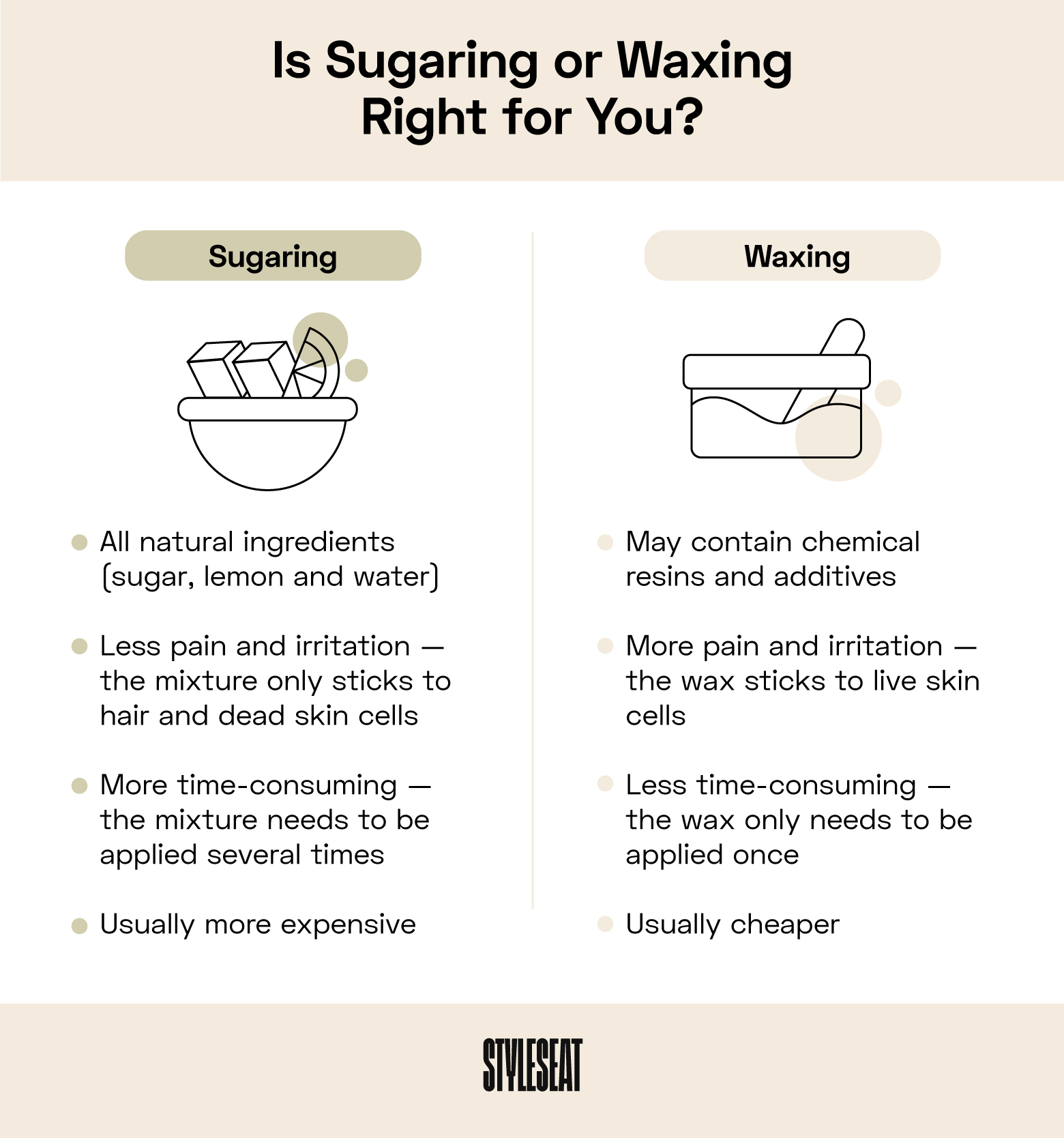
Sugaring May Be Less Painful
Although both sugaring and waxing can be painful, sugaring is usually considered a more gentle process because it affects the hair and not the surrounding skin. Waxing, on the other hand, may remove live skin cells and therefore cause more pain.
How much discomfort you feel depends on your own pain tolerance, as well as the area you’re having treated. Sensitive regions, such as the bikini area, may hurt more when treated. A good esthetician can help make the process less painful. You can also help yourself by exfoliating the area beforehand and taking an over-the-counter painkiller before your appointment.
Waxing Is Usually Cheaper
Costs for both hair removal methods vary across the U.S. How much you pay for any given service can also depend on the salon where you book the appointment, the experience of the esthetician, and which part of the body you have treated. In general, waxing is cheaper than sugaring, and appointments don’t take as long.
Sugaring May Cause Less Irritation
Both treatments come with the possibility of side effects, such as inflammation, redness, or ingrown hairs. Sugaring typically causes less irritation and fewer bumps than waxing, but you may still experience some. Booking your skin care appointment with a skilled esthetician can minimize the side effects you experience, as can proper aftercare.
Aftercare Tips for Waxing and Sugaring
For 24 hours after your appointment, the skin that was waxed or sugared may be more sensitive. The following tips can help you properly care for the area to minimize irritation and keep your skin smooth:
- Wear comfortable clothing
- Avoid direct contact with the sun or tanning that area of skin
- Avoid further exfoliation
- Take showers instead of baths
When Shouldn’t You Have a Sugaring or Waxing Treatment?
While many people have great results with both sugaring and waxing, there are some times you shouldn’t receive either service. Avoid sugaring and waxing if the following are true:
- You’re sunburned
- You have very sensitive skin
- You have certain skin conditions (such as eczema, rashes, or sores)
- You are taking certain medications (such as isotretinoin)
- You’re using retinol or vitamin C on your skin (it is recommended to postpone treatments until 28 to 40 days after you’ve stopped using these so new skin cells can be produced)
Although you can, you may not want to get a sugaring or waxing treatment during your period because it may cause extra discomfort.
Other Hair Removal Options
Sugaring and waxing aren’t the only ways to get rid of unwanted hair, of course. Some hair removal treatments can be done at home while others require a visit to a professional.
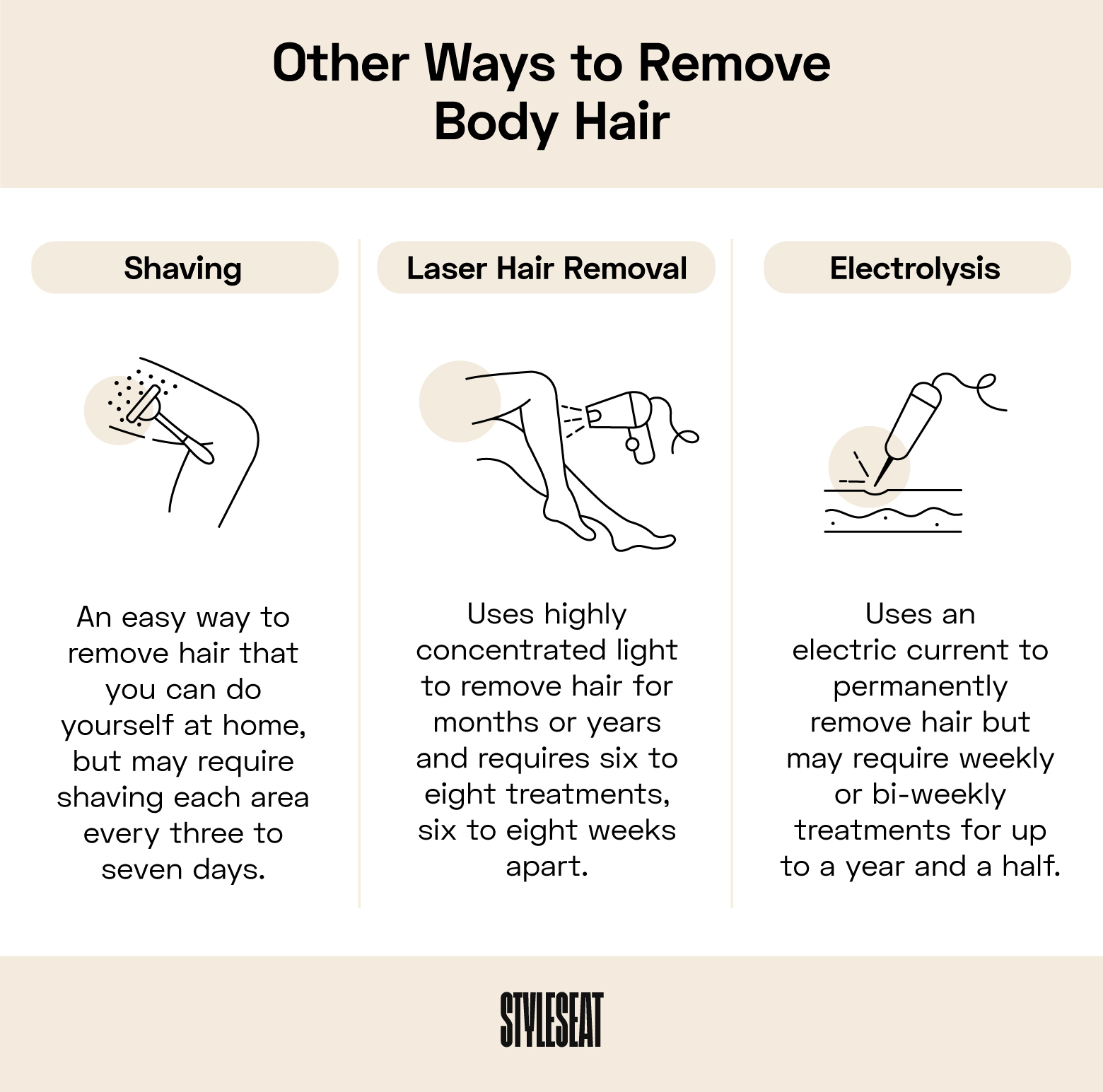
Shaving
Shaving is one of the most affordable and accessible methods of hair removal because you can do it yourself at home. Depending on your skin and razor, however, shaving can cause itching, razor burn, and ingrown hairs. Furthermore, the results don’t last long. To keep your skin smooth, you may need to shave every three to seven days.
Laser Hair Removal
Less painful than sugaring or waxing, laser hair removal can also remove hair for longer. You can have it on any part of your body. Performed by a professional, the method uses highly concentrated light to destroy hair follicles so they can’t grow. Laser hair removal is not permanent, and you may need six to eight treatments, six to eight weeks apart. Once you complete all of your sessions, you may not see new hair growth for months or even years.
Electrolysis
Electrolysis can permanently remove hair nearly anywhere on the body. Because the procedure involves a thin wire being inserted into the hair follicle under the skin, it may cause some discomfort. To remove hair, an electric current moves through the wire to destroy the hair root. You may need an appointment every week or every other week for up to a year and a half to achieve permanent hair removal.
Find a Skilled Esthetician for the Best Results
While both sugaring and waxing can keep your skin smooth for three to four weeks, there are reasons you might choose one treatment over the other. Sugaring tends to cause less pain and irritation, making it a good choice for people with sensitive skin. If budget is a priority, you may find waxing a little easier on the wallet (although exact prices can vary).
Whether you opt for waxing or sugaring, choosing a qualified esthetician can help ensure good results with minimal side effects. StyleSeat can help you find and book the right esthetician for waxing or sugaring services near you.
